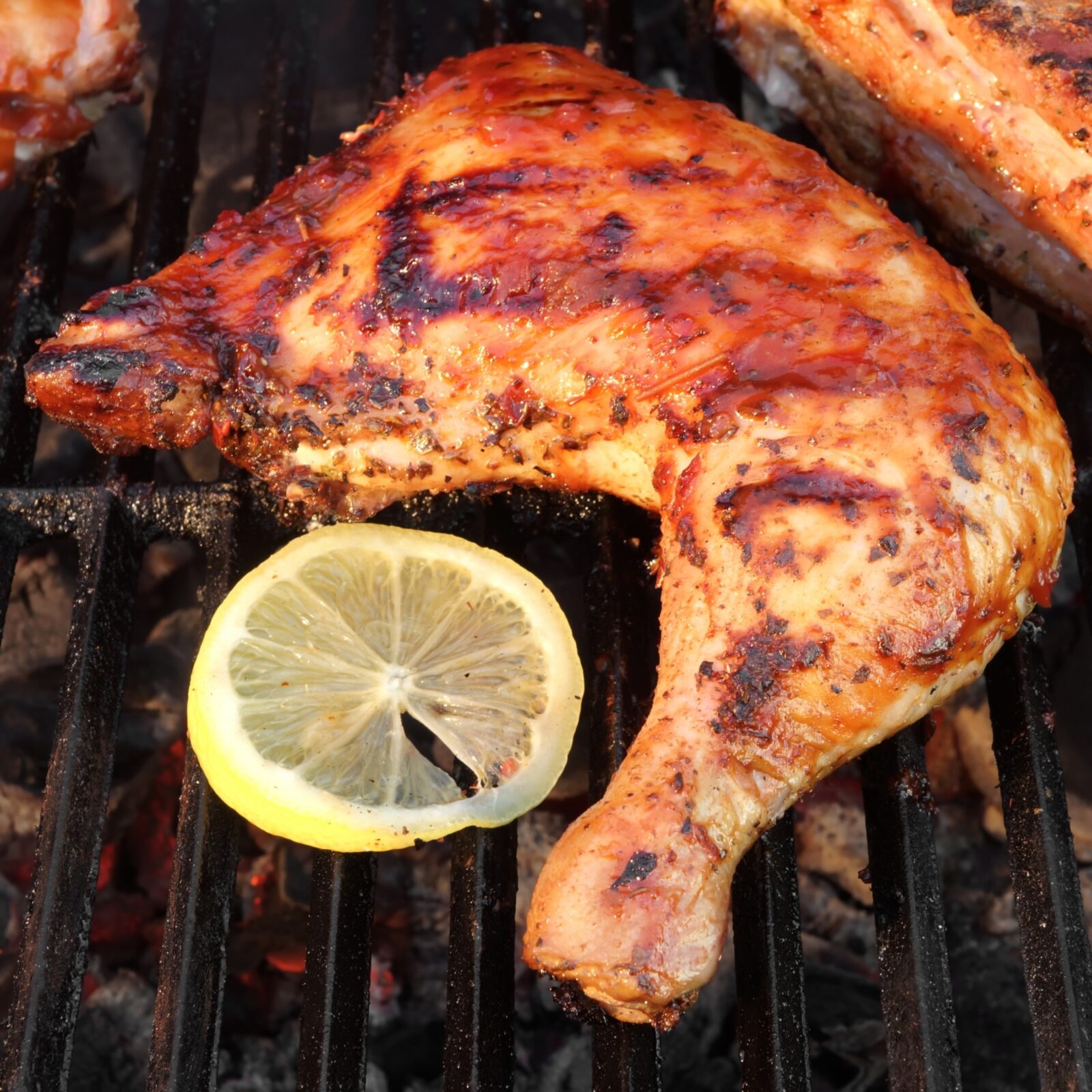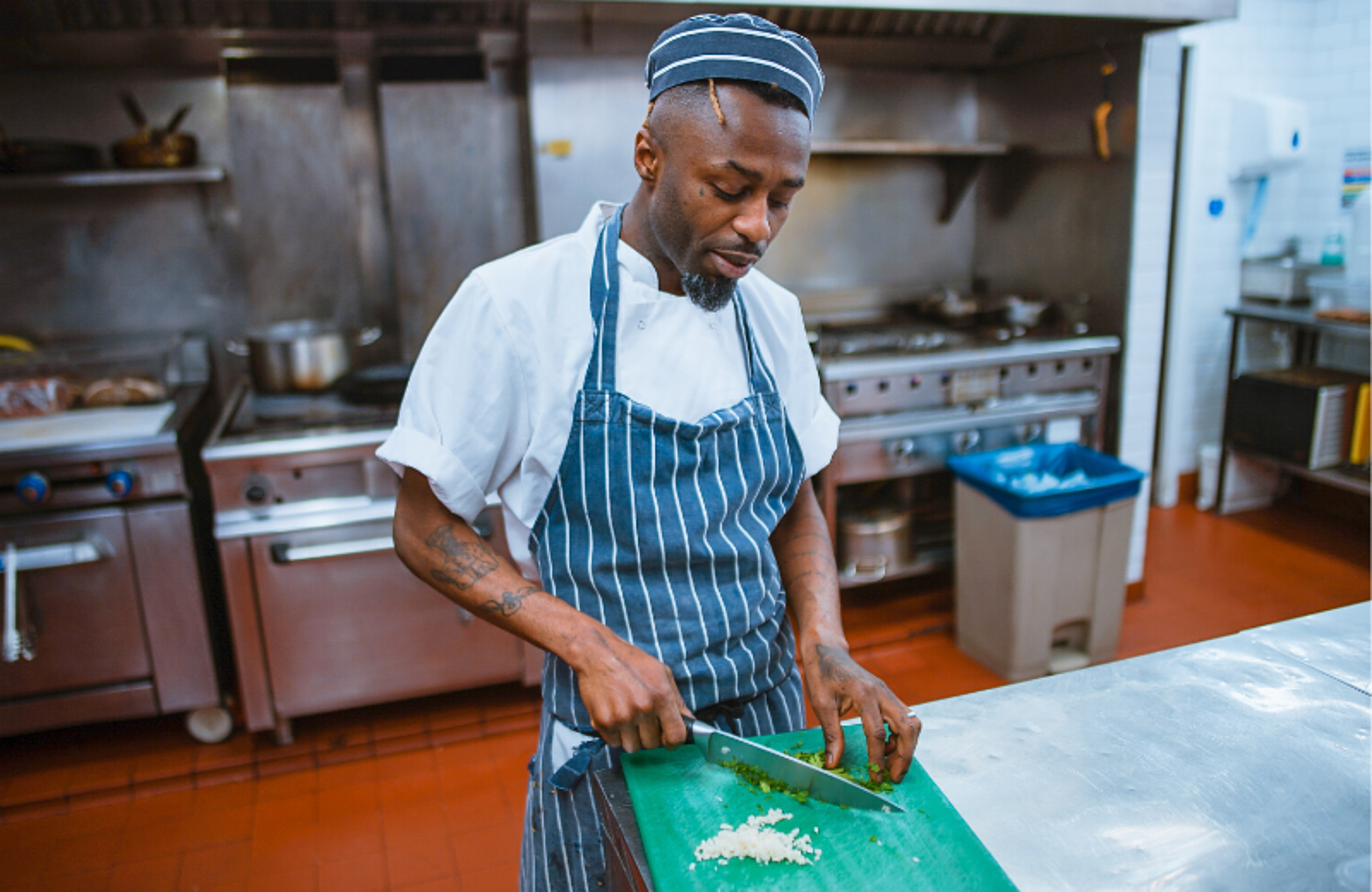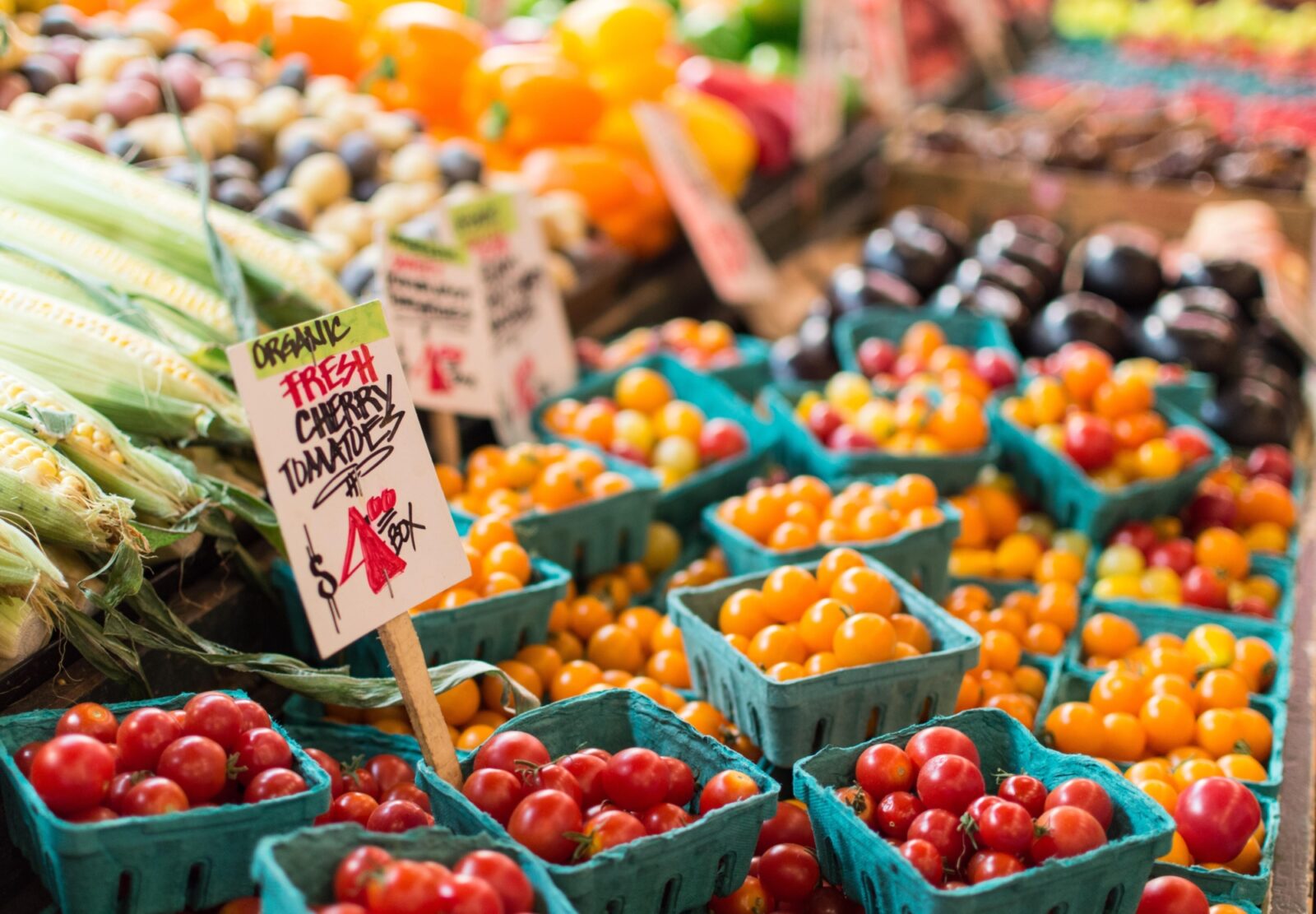How to Track and Reduce Restaurant Food Waste

Justin GuinnAuthor
What are the top causes of restaurant food waste?
The top causes of restaurant food waste are:
1. Spoilage
2. Miscalculated portions
3. Food spillage
4. Refires
Food waste is a massive problem in our society — especially restaurant food waste.
Inefficiencies in the U.S. food system result in nearly 40% of the country’s food supply going unsold or uneaten. And the food service industry generates approximately 13 million tons of food waste in the United States, which mostly come from restaurants.
While operators have plenty of methods and procedures to better control food costs, they must implement food waste reduction solutions to help limit waste and increase restaurant cost controls capabilities — because as your food waste decreases, your ingredient yields and overall profitability increase.
It’s a win-win.
In this article, we explore the common causes of restaurant food waste, how to help decrease food waste, and how to track waste events so you know exactly how waste is impacting your inventory yield and profitability for individual menu items.
You can also click here learn more about restaurant food waste and how Toast.org is partnered with ReFED to make a change
Restaurant Cost Control Guide
Use this guide to learn more about your restaurant costs, how to track them, and steps you can take to help maximize your profitability.

What causes restaurant food waste?
Several different factors contribute to restaurant food waste. The four most common reasons for food waste include:
1. Spoilage
Food can become unfit for consumption due to improper handling, storage, or packaging. Common examples include improper refrigeration, over-ordering, and poor restaurant inventory management methods.
2. Miscalculated portions
Incorrect or inconsistent kitchen training can lead to larger portion sizes than planned. As much as it may please customers to have leftovers to bring home, you risk creating more waste—and losing valuable margin on the plates.
3. Food spillage
Food spillage is quite common in restaurants. It can include anything from a server dropping a tray of food in the dining room during food service to a prep cook accidentally knocking over their cutting board. Those mistakes, no matter how small, can add up to large monetary losses.
4. Refires
Refires occur when a plate of food is sent back to the kitchen and needs to be remade. Maybe a diner received the incorrect order, they failed to mention they’re allergic to something, or the food wasn’t prepared to their liking. Whatever the reason for the refire, it’s costing your kitchen twice as much to make one plate.
Understanding the most common ways that restaurant food waste is generated better prepares you for knowing how to reduce it.
Restaurant Operations Manual Template
Use this free template to easily outline all of your operating procedures and make day-to-day operations as consistent as possible.

How to reduce food waste in restaurants
There are many ways to reduce food waste. Here are four methods that can be implemented to directly address the most common sources.
1. Conduct a waste audit
Without conducting a waste audit, there is no way of truly knowing the amount of food waste your restaurant is tossing out as a result of your current operations and what your potential cost savings are to help your bottom line.
This does mean you’re going to have to roll up your sleeves and go through the trash.
Every day for one week, before you prepare your trash for pick up, have a team open the bags and sort out the trash into the following categories:
- Paper goods (paper towels, napkins, promos/flyers, etc.)
- Takeout products (cups, plates, containers, etc.)
- Produce (fruits, veggies)
- Meat (this can include poultry and fish, besides red meat)
- Plastics
- Other (aluminum foil, broken plates, etc.)
Feel free to fine-tune these categories to fit your restaurant’s menu, offerings, and waste.
Once everything has been sorted, weigh each of the piles on a scale and record their weights in a spreadsheet. Next, multiply each weight by the number of days your restaurant is open a year — this will give you a better idea of your annual waste in each of your waste categories.
Now that you’ve finished getting down and dirty conducting your waste audit, it’s time to analyze the results.
The waste categories with the heaviest weights are the areas that need the most attention. For example, if you find your meat or produce waste is heavy, it could be an indication that your current menu items aren’t as big of a hit as you’d like, or that your prep cooks aren’t being thorough enough in their produce and meat cuts, or that you’re getting poor quality products from your distributors.
The insights you will gain from a waste audit stand to positively influence many aspects of your restaurant's operations by showing you exactly what changes to make.
Here are some additional food waste auditing tips and guides from the EPA.
2. Start a waste journal
As you conduct your restaurant’s waste audit, document and track your restaurant’s efforts in a waste journal to reduce food waste going forward.
Have staff record the weight of trash and recyclables as they prepare them for pick up.
Encourage staff to jot down descriptions of any noteworthy items that were disposed of, like broken pint glasses, pallets from deliveries, or rotten produce.
Your restaurant’s waste journal will enable you to track your progress over time and assess whether your efforts have put a dent in reducing waste in your restaurant.
3. Order to par to reduce spoilage
You can reduce the amount of food spoiled in your kitchen with better inventory controls and placing orders based on par levels. Par levels are the minimum amount of inventory needed to maintain demand while including a small margin of error to account for changes in daily demand.
To forecast your par levels, refer back to past sales data. For example, you can estimate holiday sales forecasts by exploring sales over the same period last year. Those projections, along with seasonal recipe modifications, should be used to better anticipate what you’ll actually use.
Software can make par level ordering even easier. Modern inventory management solutions that are integrated with procurement tools can automatically generate order guides based on what’s already in the kitchen and what’s needed to maintain par, so there’s less guesswork in ordering — and less food to be wasted.
4. Implement restaurant policies to reduce waste
Though some restaurants have successfully implemented zero-waste and sustainability policies to reduce waste and food costs, it’s not the industry norm. It’s more realistic to take small steps in every corner of the kitchen to set the expectation that everyone is responsible for reducing excess food.
Food scraps and excess that can’t be repurposed can be considered for composting instead. If you have space, use composted leftover food to create nutrient-rich soil that can support the growth of your own herb and vegetable garden.
Remember, it’s better to reduce food waste upfront than find ways to eliminate it after it’s already been created.
For example, prep cooks should know how to correctly cut, clean, trim, and portion food, and servers should always ask about customer preferences and allergies up front to eliminate refires. Proper team training can go far in reducing food waste at a restaurant.
5. Adopt the FIFO method
To reduce the amount of spoilage in your restaurant, use the first-in, first-out method, also known as FIFO.
In a FIFO-compliant kitchen, inventory will be organized and rotated so that the oldest items in your kitchen will be used first, cutting down on food waste as a result of spoiling.
Say you received a shipment of hamburger buns on Monday, and again on Wednesday. According to the FIFO method, the hamburger rolls received on Monday will be used first.
Adhering to the FIFO method may mean shipments take a little longer to unload, but moving the older stock to the front of the shelves and putting the new stock behind it will ensure that you are not wasting good product and throwing out unused food simply because of your order of consumption. However, it’s still important to follow food safety laws and make sure the older food you’re using first is safe for consumption.
6. Calculate and control inventory days on hand
Inventory days on hand (DOH) refers to the average number of days you hold inventory before selling it. This calculation can be applied to your restaurant’s inventory on the whole, or to individual inventory items.
For example, if you order 180 lbs of chicken and use 30 lbs of chicken each day, that chicken is ‘on hand’ for six days.
180 lbs of chicken ÷ 30 lbs of chicken a day = 6 days ‘on hand’
Food items that have a higher inventory days on hand ratio are not selling quickly, which could indicate that guests aren’t happy with the item’s corresponding dish on the menu.
Food items that have a lower inventory days on hand ratio are selling quickly; reach out to your distributor or vendor and negotiate a better deal for these items.
By paying attention to how your kitchen uses inventory on a weekly basis, you can optimize your orders with vendors to only include what you’ll use in between deliveries. If you’re receiving a quantity-based discount, talk to your vendor about storing the product in their space and only delivering as needed. This will ensure that you are freeing up your coolers, and the vendor will rotate out the product so that it’s fresh when you receive it.
Be sure to revisit your reports quarterly to make sure that you are staying on top of what’s selling, what’s not, and what costs have increased due to seasonality, market, trends, etc.
7. Use recipe management for consistent portions
Proper recipe management in restaurants will give you the yield, or batch size, that each recipe creates. Knowing what each recipe yields is an important step both in calculating plate costs and maintaining correct and consistent portion sizes.
Manual recipe management is complicated and prone to human error, but recipe management software helps you create, cost, and manage recipe yield with ease. Use it to accurately convert all ingredients in your kitchen to the units of measurement your staff uses to cook, along with correctly calculating proper yields for each dish. Share recipes across locations to ensure each dish is the same size and flavor, no matter where your customer consumes it.
You should also train kitchen staff to make each recipe exactly as it’s written, including its final serving size. Using consistent measurements and portions will help eliminate surplus food.
8. Use a food waste tracker
Tracking restaurant food waste helps you understand what’s not selling from your menu, gives you a clear picture of the types of food waste you’re generating, and helps you find patterns to find the root causes of that waste.
A kitchen display system can also help reduce your restaurant’s waste a great deal. Lost tickets result in thrown out food, double orders, and not to mention wastes tons of paper. Having an electronic ticket tracking system streamlines your kitchen and gives visibility into sales and fulfillments while significantly reducing food waste.
9. Store food properly
Make sure that all food items are placed in proper storage areas in appropriate containers and at the optimum temperature.
Label all perishable products with the date they were received, the date they should be considered expired, and the amount of servings within each container. In some kitchens, staff will use a color-coded labeling system to make it easier for BOH staff to know what category of item is in which container.
If you’re a new restaurant owner unsure of how to organize and store food items in your kitchen, check out Toast’s Back of House guide.
10. Multi-use menu items
Finding ways to use a food item in multiple dishes will enable you to save money by buying in bulk; it will also help you reduce that inventory item’s DOH ratio and cut down on food waste as a result of spoilage.
Let’s say you only use broccoli in one salad recipe and often find yourself throwing out a significant amount of the unused vegetable because it’s gone bad. You can either change the recipe to take them out, or find new ways to use them before they go bad, such as a pizza or pasta dish, or create a variety of seasonal offerings that feature broccoli.
11. Pay attention to food seasonality
You may have an item that traditionally does really well in your restaurant, but at certain times of the year, you notice yourself tossing more than expected. This can be due to the seasonality of produce.
Avocados, for example, have a peak season in the US from May to August. If you’re getting the same number of avocados from the same distributor all year long, there may be some batches that are quicker to go bad, resulting in thrown out product.
Whether you choose to restructure your menu around produce seasonality or simply purchase less produce that’s out of season, you can make sure that you’re always offering the freshest items all year long and won’t be throwing out so much unused food.
12. Run weekly specials
Weekly specials and promotions are a great way to quickly repurpose unused food before it spoils and ends up as food waste.
Maybe business was slower than expected this week and you end up with too much chicken breast on hand: Try repurposing the chicken breasts by promoting them as a limited-time offer.
How to track food waste in restaurants
Monitoring and documenting every instance of food waste at your restaurant is vital not only for better food cost control, but also for overall restaurant accounting best practices. You’ll get much more visibility into why your restaurant cost of goods sold (COGS) numbers aren’t adding up the way they should and why inventory values are off.
Food waste management initiatives can be as simple as updating a spreadsheet every time a waste event occurs. Simply set a sheet up with columns for the ingredient or recipe that was wasted, the date and time of the event, the name of the employee responsible for the waste, and an area for additional comments or context.
Once a tracker is set up, you can use it to find patterns in waste events. For example, if food waste from refires regularly increases on days when a certain front of house employee is working, it may indicate they’re making mistakes that can be fixed with additional training.
However, manual food waste tracking does not account for the monetary value of what was lost.
Luckily, software for food waste tracking combined with real-time invoice data makes it easy to see exactly how much those mistakes cost the business.
Reduce restaurant food waste with Toast and xtraCHEF by Toast
Toast combines with xtraCHEF by Toast to help empower you to track your restaurant’s food waste. Our platform helps you implement a repeatable process to document every type of food waste, from spoilage to spillage, directly within the inventory management module.
Just add a waste event against an inventory item and choose a waste type, cause, and quantity.
You can also upload photos of the exact waste event and assign it to specific employees, reasons, and times to uncover patterns. Our software automatically calculates the cost of the waste based on updated prices via our restaurant invoice processing automation.
Waste tracking is just one of the valuable cost control capabilities that Toast and xtraCHEF unlock for your operation. Request a demo with one of our Product Specialists to see how else we can help restaurants reduce food costs.
Related Resources
How to Consistently Conduct Actual vs. Theoretical Food Cost Analysis?
Understanding actual vs. theoretical costs can help reduce costs, boost profitability, and highlight your restaurant’s financial health.
Get AccessIs this article helpful?
DISCLAIMER: This information is provided for general informational purposes only, and publication does not constitute an endorsement. Toast does not warrant the accuracy or completeness of any information, text, graphics, links, or other items contained within this content. Toast does not guarantee you will achieve any specific results if you follow any advice herein. It may be advisable for you to consult with a professional such as a lawyer, accountant, or business advisor for advice specific to your situation.





